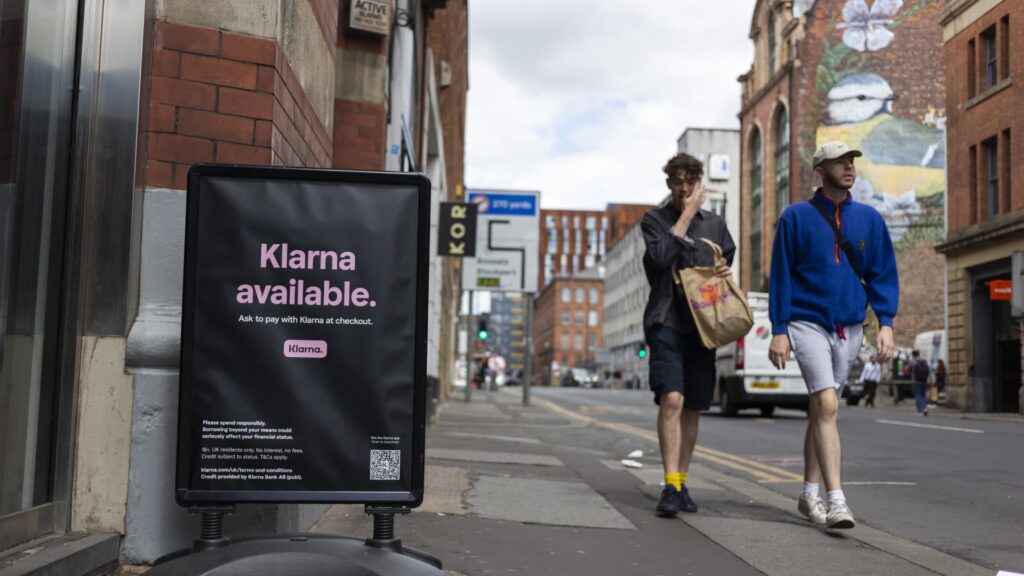Pedestrians walk by an advertisement for Klarna.
Daniel Harvey Gonzalez | In Pictures via Getty Images
When she started shopping for the holidays late last year, Kiki Andersen was struggling to buy her loved ones gifts. So she turned to a novel solution to get through the season: Buy now, pay later.
The 31-year-old comedian from Los Angeles used Klarna and PayPal to split a variety of purchases into four interest-free payments spread out over a series of weeks. At the time, her upfront cost was about a quarter of the overall purchase price.
But now that January has arrived and the other installments are starting, Andersen isn’t sure how she’s going to pay them off. She has found herself buried under a mountain of micro payments, wondering how she’s going to cover her bills.
“I’ve definitely been selling clothes … if I have to go sell a pair of shoes to make a payment, I will,” Andersen told CNBC of the roughly $1,700 she racked up in buy now, pay later debt. “I’m definitely worried about [the payments]. It’s definitely a concern and I’m definitely going to have to find a way to come up with the money.”
Andersen is one of many Americans who turned to buy now, pay later to fund their holiday shopping last year to avoid credit card debt but are now having trouble paying off those bills.
In an era where persistent inflation and record-high interest rates are shaping financial decisions for many shoppers, the service helped fuel a boom in overall online spending that topped out at $222 billion from Nov. 1 through the end of December. During the season, buy now, pay later usage hit an all-time high, rising a staggering 14% from the prior year and contributing $16.6 billion to online spending.
On Cyber Monday alone, buy now, pay later use spiked nearly 43%, Adobe said.
“Sales, especially online sales, were probably juiced to some extent because of buy now, pay later usage,” said Ted Rossman, senior analyst at Bankrate. “A lot of people are drawn to this financing…
Read the full article here





